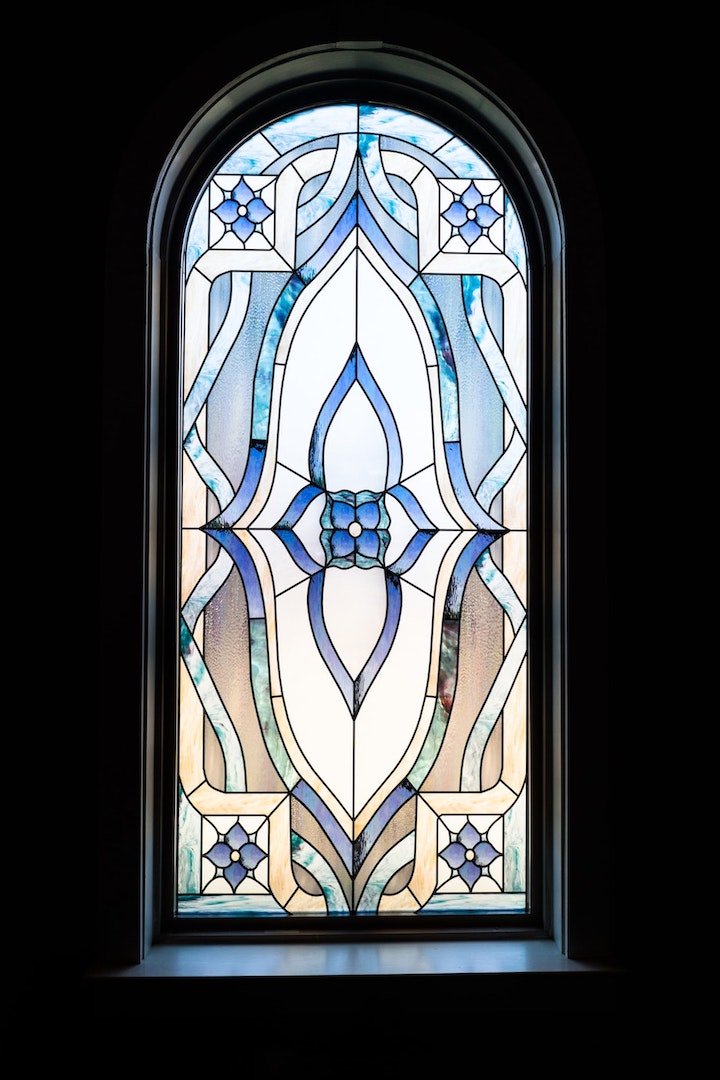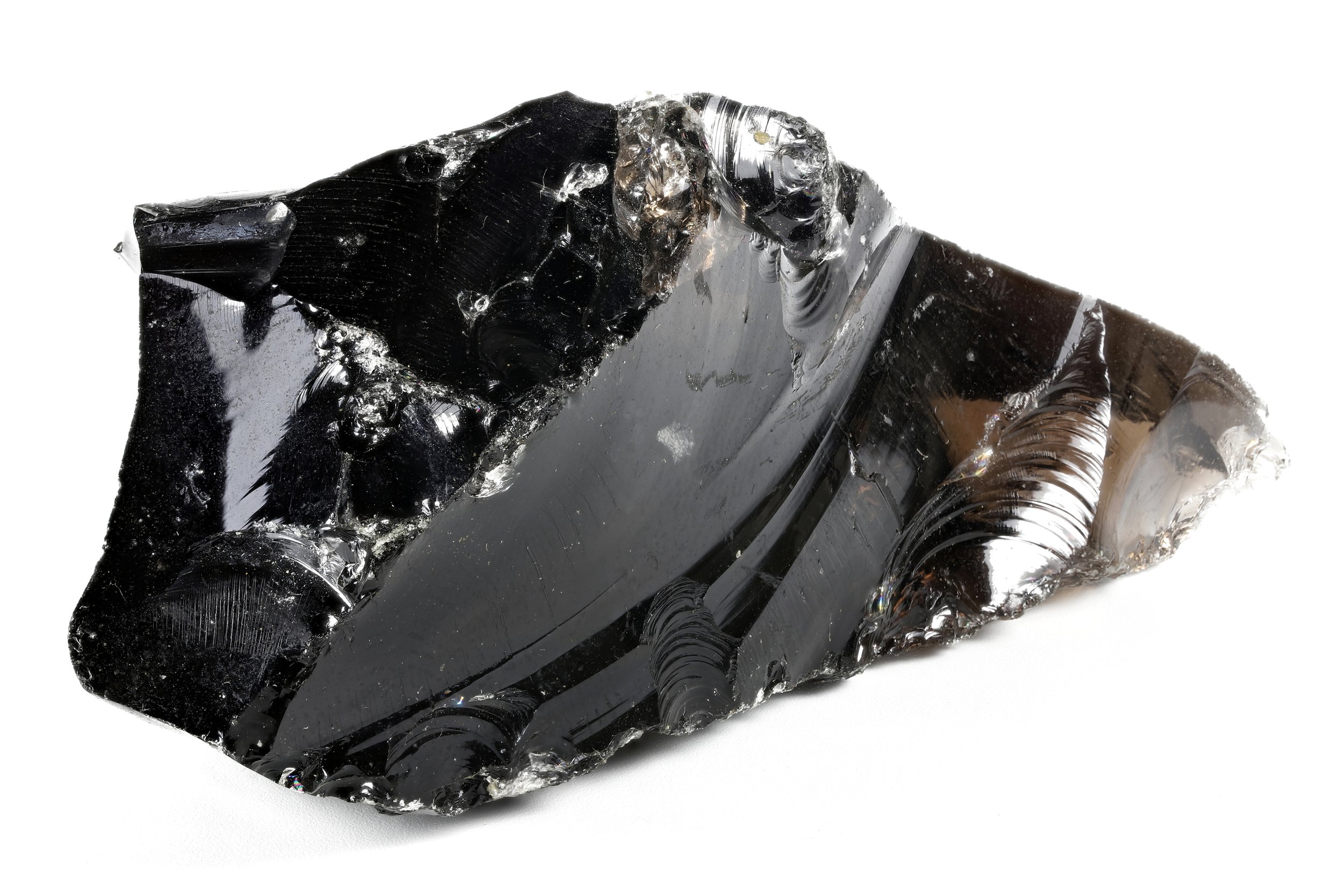Glass is made from sand.
It can be clear or coloured.
It can be flat.
Glass blowers shape glass by blowing air into it.
Glass objects have been made and used since ancient times.
Antique glass items in a glass case on display in a museum. ©Loes Klinke on Unsplash
How glass is made
Glass is a made by melting a mixture of sand and other minerals in a furnace at temperatures of 1700 degrees Celsius.
Silica in the form of sand is the main ingredient of glass, and this is combined with soda ash and limestone in special pots which are placed into the furnace. Broken, recycled glass known as 'cullet' is added to the ingredients to speed up the melting process. Other materials can be added to produce different colours or properties. For example, adding the minerals cobalt or sulphur will produce coloured glass.
A recipe for glass
A modern stained glass window. Image©Andre Hunt on Unsplash
sand or silica (SiO2)
sodium carbonate (Na2CO3)
limestone (CaCO3)
magnesium carbonate (MgCO3)
additives to improve the quality of the glass, and to colour the glass.
While it is still molten (a hot liquid), glass can be manipulated by glass blowers to form bottles and other decorative articles. They blow air into the liquid glass through a long pipe.
Watch a video of glass blowing
In factories today, bottle blowing machines produce bottles and jars by pressing and blowing the molten glass inside a mould.
Flat glass is made by floating the molten glass onto flat beds of tin.
You can watch a video about glass making for windows :
Glass can also be coated, heat-treated, engraved or decorated. It is also used to make optical fibres for use in medicine and for parts for modern communications.
Coloured glass is used in windows in this chapel in Paris, France. ©iStock
Some other things made with glass
Aquariums, Christmas tree ornaments, doors, furniture tops, scientific apparatus such as test tubes, mirrors, ornaments, spectacles, stained glass for windows, other windows and car windshields.
Properties of glass
It can be strong.
It is transparent.
It is heat and electrical resistant.
It can be shaped.
Naturally formed glass
Obsidian is a naturally formed glassy stone. It forms when sand shoots out of an erupting volcano. It melts in the volcanic lava and when it comes into contact with water it cools quickly. The glass is dark green to black.
Obsidian has been used by ancient peoples since the Stone Age, as a cutting tool, for tips for spears, and for ceremonial purposes. It is used today to make jewellery and some surgical instruments.
History
This ancient glass was found in the ruins of the ancient Roman city of Pompeii
Glass has been made since the times of the Ancient Egyptians, about 3000 years ago. The Egyptians made glass beads and used them as jewellery.
Recycling glass
Glass bottles and jars can be recycled. Once they are cleaned they can be used to make new glass bottles and jars. Using old glass to make new saves lots of energy because it doesn't need as much heat to melt it. Using less energy reduces global warming and climate change.
Glass rubbish takes up a lot of space in garbage dumps and is dangerous when left lying about. To help our environment we need to use glass carefully and save it whenever we can.
Reuse and recycle
Reuse glass jars and bottles to store things. Put glass bottles and jars into a recycle bin so it can be melted and made into new glass containers.
Note: Some councils don’t like broken glass in their bins, so always check your local waste collection calendar for advice.
It’s a good idea to get information from more than one source!
Read more about glass
https://wiki.kidzsearch.com/wiki/Glass
Read about recycling glass
https://wwf.panda.org/knowledge_hub/teacher_resources/project_ideas/recycling_glass.cfm







